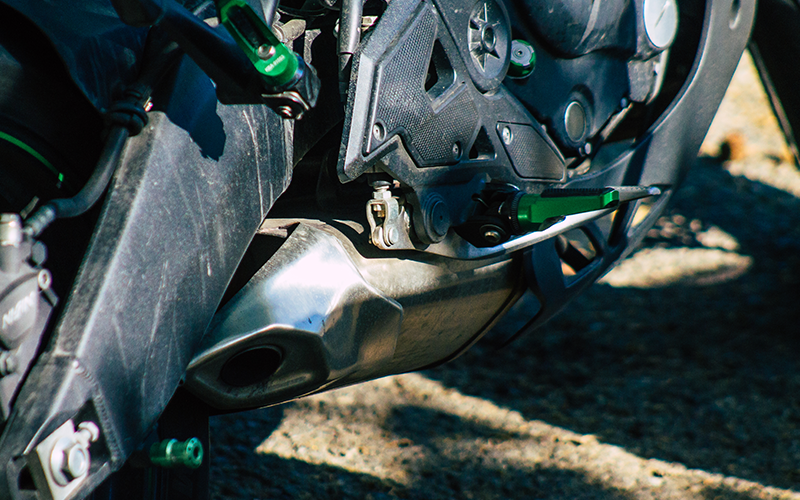Motorcycle enthusiasts often seek ways to enhance their bike’s performance, and one of the most popular upgrades is installing a performance exhaust system. But does a performance exhaust really increase motorcycle power? Let’s break it down by examining the benefits, mechanics, and factors that influence power gains.
How Does a Performance Exhaust Work?
The exhaust system of a motorcycle functions as a critical component for achieving engine efficiency. The main function of standard exhaust systems includes controlling emissions and reducing noise, but these features can limit the flow of air. Performance exhaust concentrations their efforts on developing exhaust flow optimization alongside backpressure minimization.

Key Functions of a Performance Exhaust:
- Improved Exhaust Flow: Allows gases to exit more efficiently, reducing back pressure.
- Weight Reduction: Performance exhausts are often made from lightweight materials like titanium or carbon fiber.
- Enhanced Sound: Produces a deeper, more aggressive exhaust note, appealing to many riders.
- Better Fuel Efficiency: In some cases, improved combustion leads to better fuel economy.
Does a Performance Exhaust Increase Horsepower?
Yes, but the extent of the power increase depends on several factors. A performance exhaust alone may provide a minor horsepower boost, but greater gains are possible when combined with additional modifications.

Factors That Influence Power Gains:
- Type of Exhaust System:
- Slip-On Exhaust: Replaces just the muffler, providing minimal power gains (1-3 HP).
- Full Exhaust System: Replaces the entire exhaust system, leading to more significant power gains (5-15 HP).
- Engine Tuning and ECU Remapping:
- Modern motorcycles rely on an Engine Control Unit (ECU) to manage fuel and air mixtures. Installing a performance exhaust without adjusting the ECU may lead to suboptimal performance.
- A fuel tuner or ECU remap helps the engine compensate for increased airflow, unlocking the full potential of the exhaust system.
- Air Intake Upgrades:
- Pairing an exhaust with a high-flow air filter allows for better combustion, further increasing power output.
- Motorcycle Engine Type:
- Larger displacement engines (e.g., 1000cc) typically see more noticeable gains than smaller engines (e.g., 250cc).
Additional Benefits of a Performance Exhaust
While horsepower gains are a key consideration, a performance exhaust offers additional benefits that enhance the overall riding experience.
1. Weight Reduction
Stock exhaust systems are often made of heavy steel, while aftermarket options use lightweight materials like aluminum, titanium, or carbon fiber. Reducing weight improves acceleration and handling.
2. Enhanced Throttle Response
With better airflow, the engine responds more quickly to throttle inputs, making the ride feel more dynamic.
3. Better Aesthetics and Sound
Many riders install performance exhausts for the deep, aggressive exhaust note and the stylish look they provide.

Are There Any Downsides?
Although a performance exhaust can offer various benefits, it’s important to consider potential drawbacks:
- Cost: High-quality exhaust systems can be expensive, ranging from $300 to over $1,500.
- Legal and Emissions Concerns: Some performance exhausts may not comply with local noise or emissions regulations.
- Heat Increase: Some aftermarket exhausts may generate more heat, affecting comfort during long rides.
- Potential Engine Issues: If not properly tuned, an upgraded exhaust could lead to lean air-fuel mixtures, causing overheating or damage.

How to Maximize Performance Gains
If you’re investing in a performance exhaust system, here are a few ways to ensure you get the most out of your upgrade:
- Pair with a High-Performance Air Filter – Improving air intake can enhance combustion and increase power output.
- Tune the ECU – Adjusting the engine control settings will help the engine adapt to increased airflow and optimize fuel delivery.
- Regular Maintenance – Keeping the exhaust system clean and in good condition prevents clogging and ensures peak performance.
- Check Local Regulations – Before installation, make sure the exhaust system complies with noise and emission laws in your region.
- Choose a Reputable Brand – Investing in a well-reviewed and tested system ensures quality and reliability.

Real-World Performance Comparisons
To understand how a performance exhaust affects real-world riding, consider some examples:
- Sportbikes: A full exhaust system on a sportbike, like a Yamaha R1 or Kawasaki Ninja ZX-10R, can add up to 10-15 horsepower when combined with proper tuning.
- Cruisers: Cruiser riders often install exhausts for sound and style rather than outright performance, but models like the Harley-Davidson Softail can still benefit from reduced weight and increased torque.
- Adventure Bikes: Riders on bikes like the BMW GS series may appreciate better throttle response and weight savings, particularly for off-road travel.
Frequently Asked Questions (FAQs)
1. Can I install a performance exhaust without tuning my motorcycle?
Yes, but it is not recommended. Without tuning, the ECU may not optimize fuel-air ratios, leading to poor performance or potential engine issues.
2. Will a performance exhaust make my motorcycle significantly louder?
Yes, most of them increase noise levels. Some models include dB killers or baffles to moderate the sound.
3. Are performance exhausts legal?
Laws vary by region. Some exhausts do not meet noise and emissions regulations, so check local laws before installing them.
4. How much horsepower can I realistically gain?
A slip-on exhaust might add 1-3 HP, while a full system with tuning can increase horsepower by 5-15 HP, depending on the bike.
5. Will a performance exhaust improve fuel efficiency?
It depends. Some riders experience slightly better fuel economy due to improved combustion, but aggressive riding can negate any savings.
6. What’s the best brand of performance exhaust?
Brands like Akrapovič, Yoshimura, Vance & Hines, and Arrow are highly regarded for quality and performance.

Final Verdict: Is a Performance Exhaust Worth It?
A performance exhaust provides substantial power gains together with improved throttle response and louder sound, which makes it an attractive performance enhancement. You can achieve the best results by using ECU tuning together with an upgraded air intake system. Check that both legal requirements and your riding requirements are met before buying the system.
Would you install a performance exhaust on your motorcycle? Share your thoughts in the comments. For expert advice on choosing the right exhaust for your motorcycle, feel free to contact us at AliWheels. We are here to help you make the best decision for your ride!










